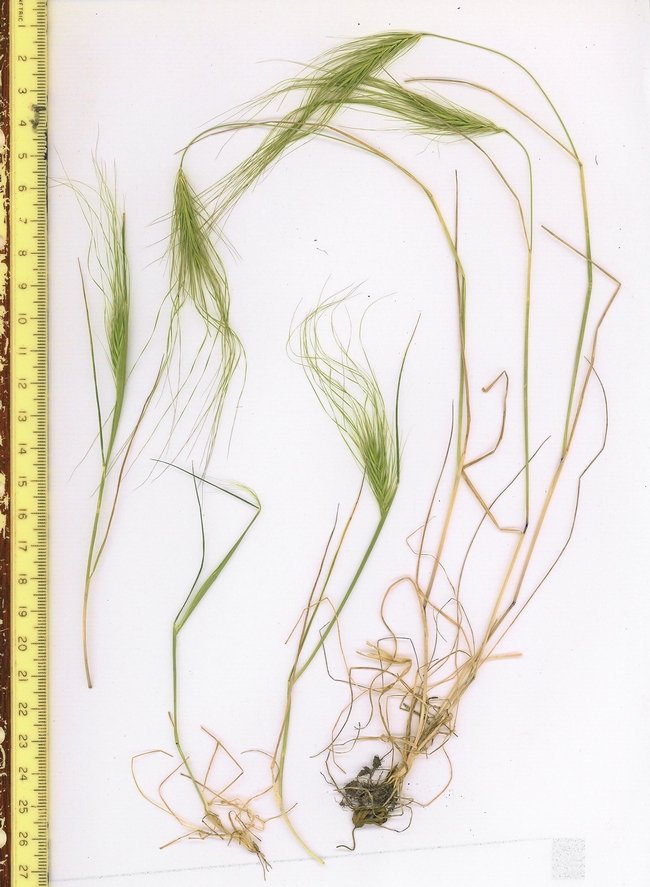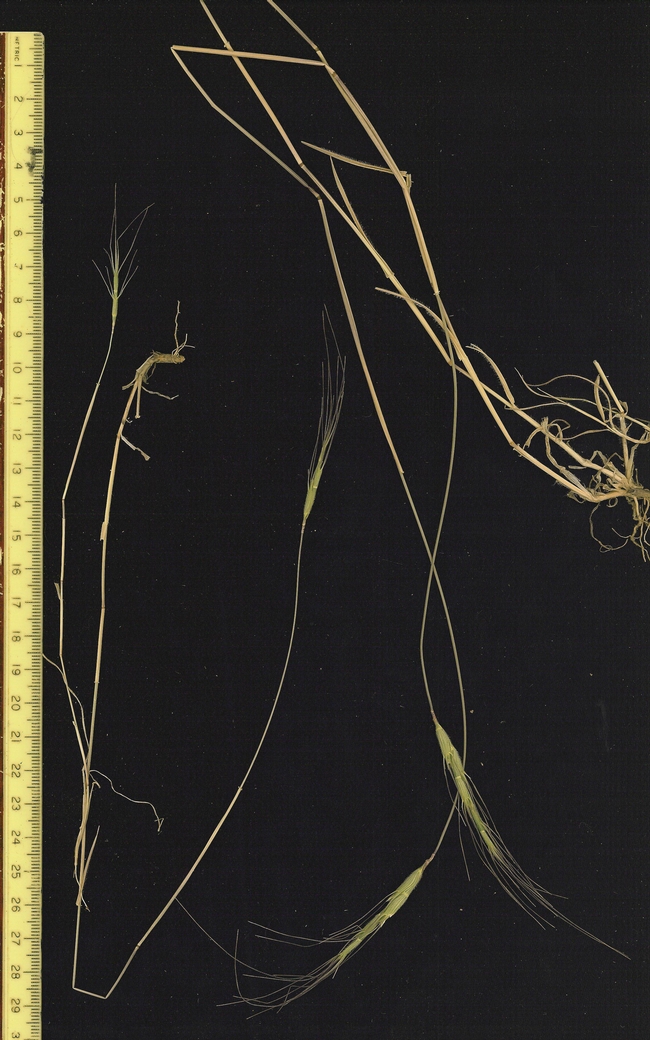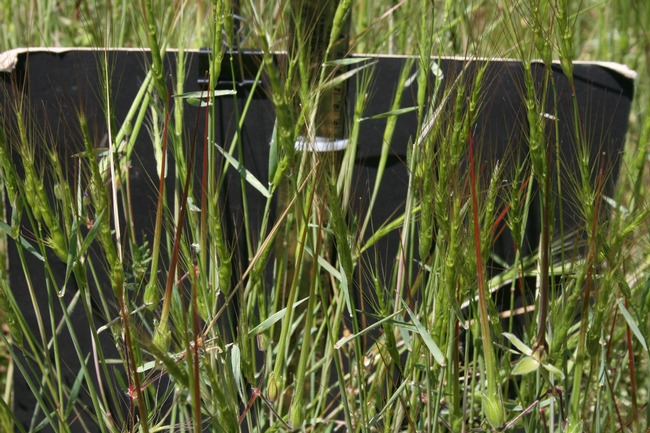- Author: Philip Brownsey
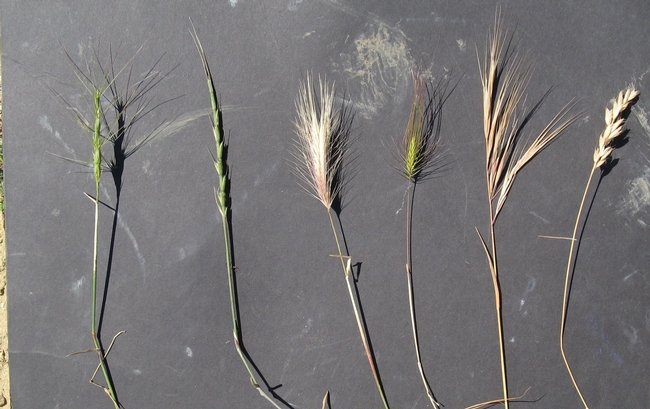
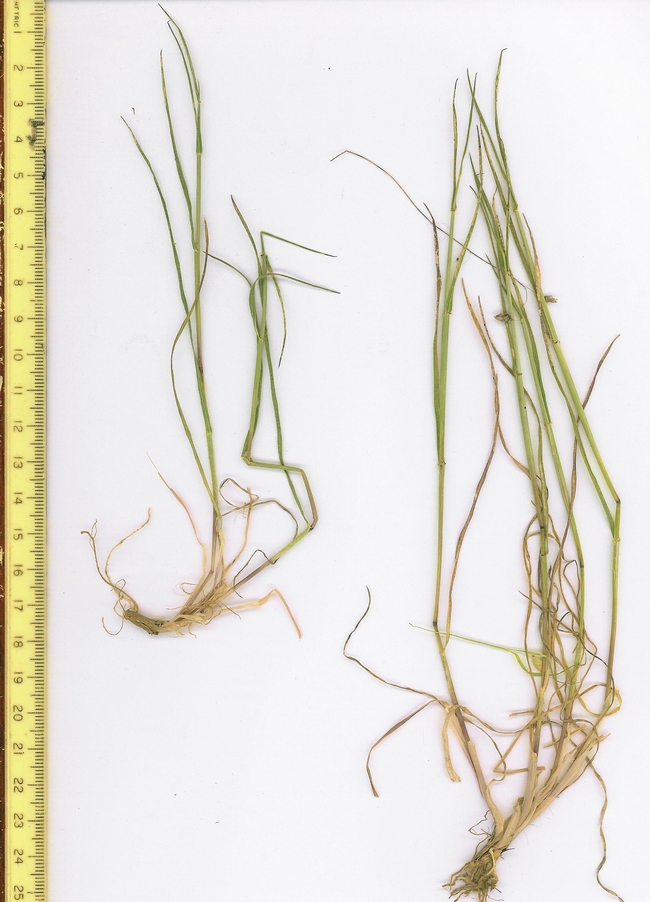
Over the last few years a team of UC researchers have explored the potential of using plant phenology to identify when targeted grazing or mowing can be applied to have the largest negative impact on medusahead and barb goatgrass. Phenology refers to the timing of biological events throughout the year and how they relate to climate and landscape. Medusahead and barb goatgrass are mostly typical of other annual grasses in California (Figure 1) in that they germinate after the start of the fall rains, grow through the winter (Figure 2), and then produce reproductive parts, flowers and seeds, in the spring. This research shows that if grazing or mowing are applied before the stem begins to elongate, the effect of these control treatments on seed production is minimal. Applying grazing or mowing treatments after the stem elongates but before the seed head emerges can decrease seed production by more than ten-fold.
Parts associated with the flower and seed head play a big role in why these noxious weeds are undesirable. Both of these grasses produce long, stiff awns that make them unpalatable to livestock (and produce discomfort to people and pets when they become stuck in our clothes). In addition, analysis shows that the nutritional content of these grasses falls below adequate levels as forage for cattle and sheep as they begin to produce flowers and awns (Figure 3). Once seed heads develop mowing or grazing will not prevent the seeds from becoming viable and germinating (Figure 4).
These observations on how the traits of medusahead and barb goatgrass change through the growing season have allowed us to define limits for when targeted grazing and mowing should begin and end. Once medusahead and barb goatgrass become susceptible to defoliation in the spring, there is a 2 to 3 week window during which targeted grazing can be used to treat medusahead (at stocking rates of 1 to 3 Animal Unit Month, or AUMs per acre, depending on the initial standing crop of forage) followed by a 5 week window during which mowing can be effective to treat either medusahead or barb goatgrass. More information on treating these two noxious weeds will soon be available in the UC ANR publication 8567, “Barb Goatgrass and Medusahead: Timing of Grazing and Mowing Treatments” that will be available on the SFREC website and through the ANR Catalog site.
- Author: Jeremy James
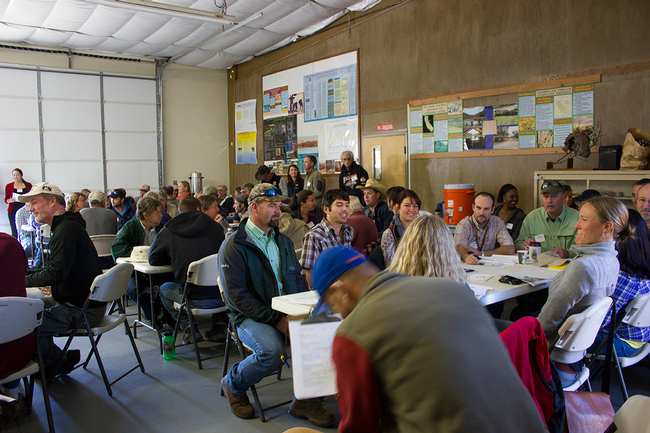
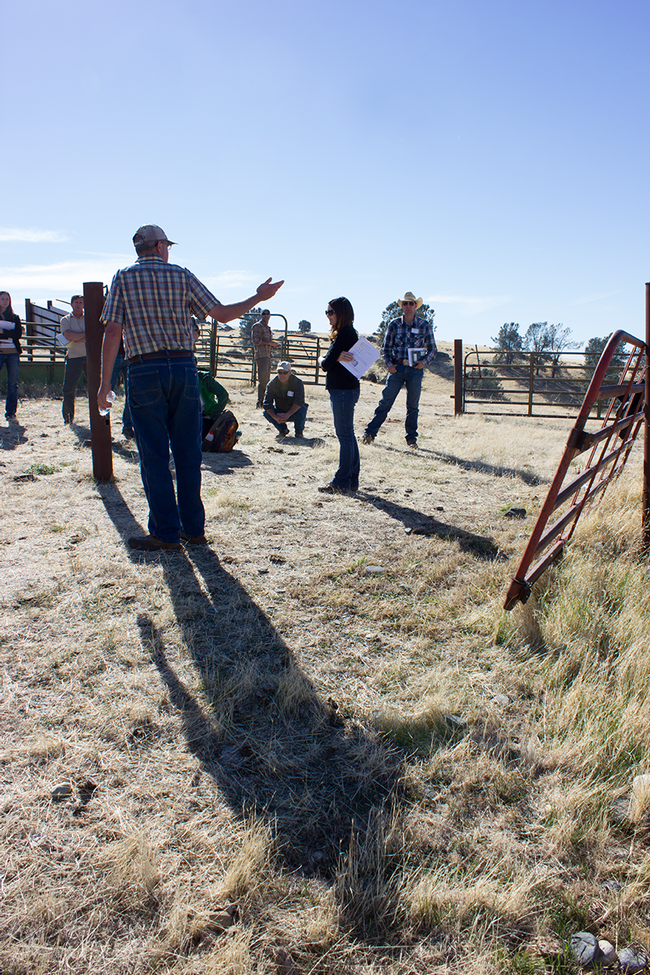
Excitement is rising amongst rangeland weed managers, researchers, and conservationists as the date approaches for a forum on The Ecology and Management of Medusahead and Barb Goatgrass. Next Tuesday, November 5th, professionals across California and beyond will unite at the Sierra Foothill Research and Extension Center under a common interest with these rangeland invasive species.
The agenda with information on the specific topics and knowledgeable speakers is available. Staff and researchers associated with UCANR and UCCE will be speaking alongside other various professionals to discuss important topics. Seed dispersal, community dynamics, grazing, prevention, and NRCS programs available are a few of the targeted concepts that will be covered regarding medusahead and barb goatgrass invasions. Field visits and a free lunch are additional compelling components of the day.
Around 100 people are expected to attend. Jeremy James, Director of the Sierra Foothill Research & Extension Center, and Elise Gornish, UC Davis Plant Sciences Postdoc, among others, have been focusing their efforts on planning and organizing this regional educational effort.
Nov 5th SFREC Medusahead Goatgrass Agenda
- Author: Jeremy James
- Contributor: Maddison Easley
On November 5th, 2013, SFREC will bring together UC researchers, land managers, producers and conservation professionals from across the state to explore some of the latest research findings and management strategies on two of the most serious rangeland weeds, medusahead and barb goatgrass. Estimates indicted these invasive species may decrease forage quality and production by up to 70 percent. Additionally, these plants increase the incidence of eye problems, such as pink eye in beef cattle. Intermountain species like medusahead create significant fuel accumulation - increasing the frequency of dangerous wildfires that destroy both livestock feed and critical wildlife habitat.

Medusahead Forum


